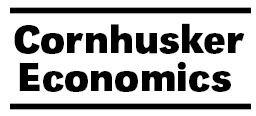Agricultural Economics Department
Date of this Version
August 2001
Abstract
The Platte River system consists of the North Platte and South Platte Rivers. The North Platte begins in North Central Colorado, passes through South Central Wyoming, crosses all of Nebraska and joins the Missouri River at Omaha, Nebraska. The South Platte begins in East Central Colorado and joins the North Platte River at North Platte, Nebraska. The Platte system provides irrigation water to over one million acres, supplies 300 MW of hydroelectric power, supports in excess of two million visitor days of recreation each year and provides critical habitat for fish and wildlife. The reach of the Platte River between Lexington and Grand Island, Nebraska, which is often called the Middle Platte or the Big Bend Reach, is especially critical ecologically. It provides critical habitat for several protected species, including the Interior Least Tern, Piping Plover and Whooping Crane. The Middle Platte also serves as a migration staging area for thousands of Sandhill Cranes, and each year is the site of an internationally acclaimed bird watching spectacle.


Comments
Published in Cornhusker Economics. August 22, 2001. Produced by the Cooperative Extension, Institute of Agriculture and Natural Resources, Department of Agricultural Economics, University of Nebraska-Lincoln .